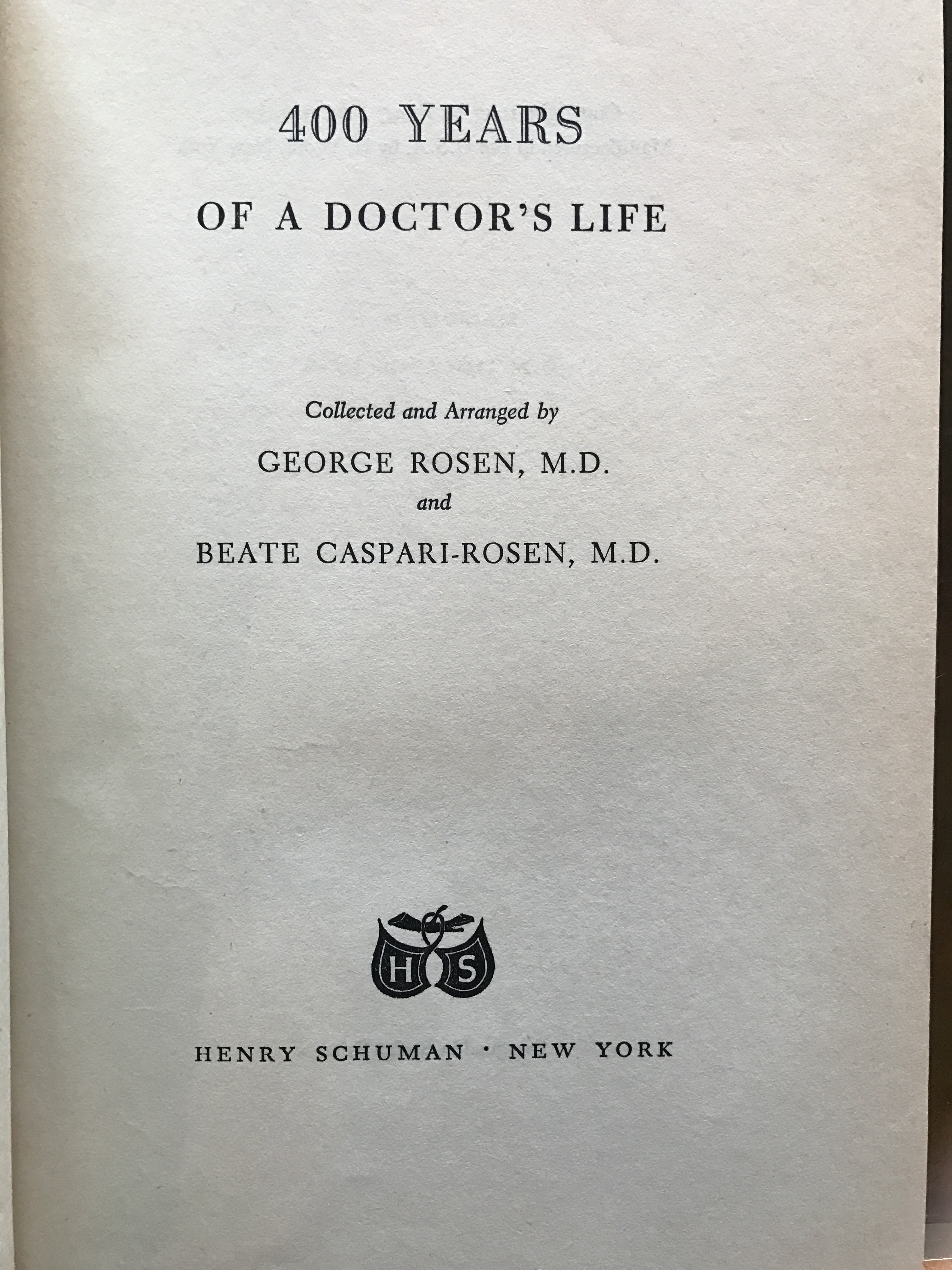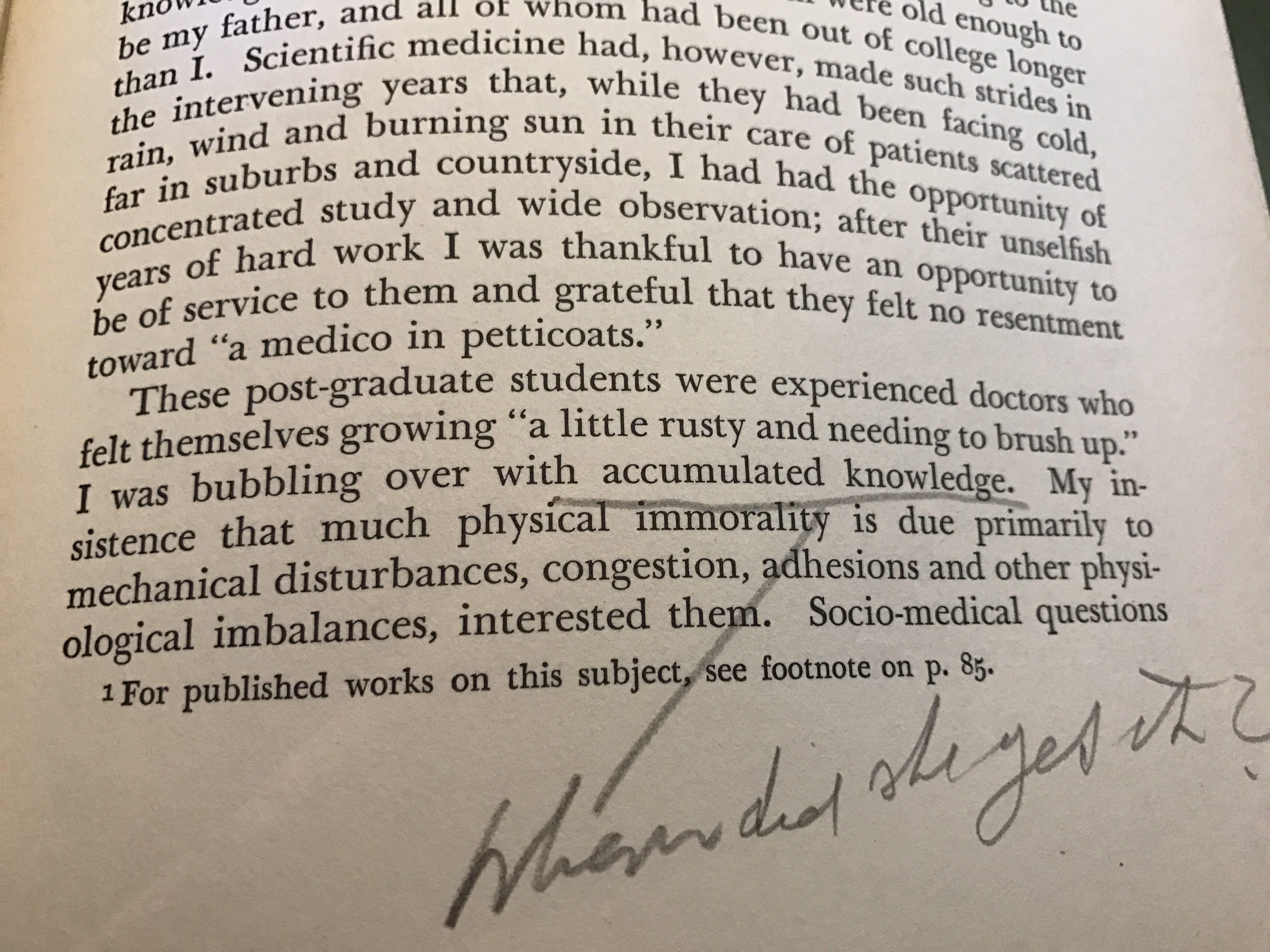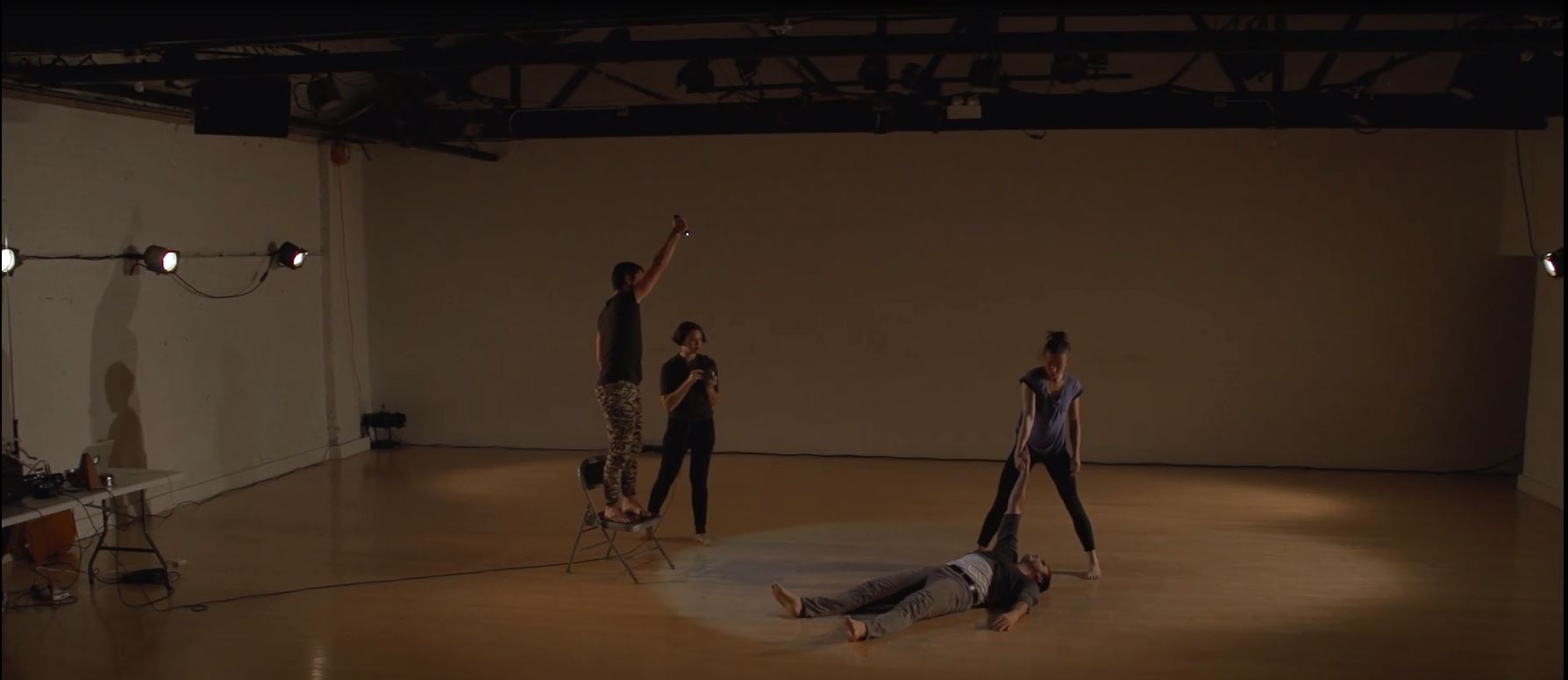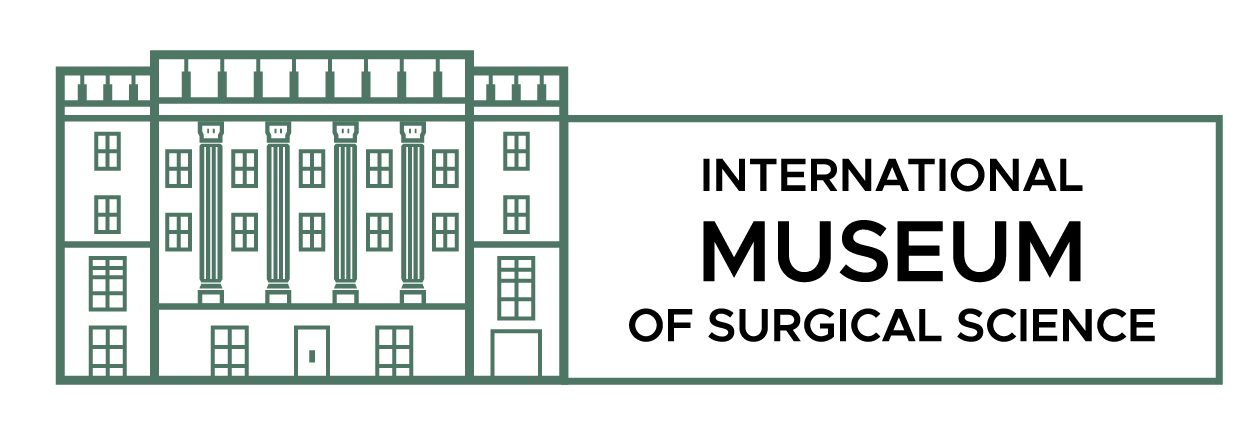Published by Carrie Olivia Adams.
I’ve had an incredible time these past few months delving into the rich book collection held by the museum. So much of it has been driven by serendipity, chasing a firefly of attention as it lands on one worn leather spine or another. Yet for all that joy of discovery, the saddest part of the culmination of any research or creative project is realizing how many pieces will be left out of the final whole—whether for reasons of focus, relevancy, or space. Finding books that actually gave voice to the experiences of women in medicine was rare enough, so it is extra difficult to have to choose to elide some from the final work. And so, I’d like to offer a sampling of quotations from inspiring women physicians alongside some peeks into the pages of the books otherwise locked up in the glass cases of the museum library.

It was a joy to find 400 Years of a Doctor’s Life, a collection of brief biographies and selections from memoirs, published in 1947 by Henry Schuman, and to see that indeed some women were included in all of those four hundred years, even if only four.
Elizabeth Blackwell, (1821-1910), is definitely the best-known and most celebrated early pioneer of women in medicine, and her intense dedication to fighting for this opportunity for herself and other women and the loneliness that comes with being the first, certainly come through in her writings.
“The idea of winning a doctor’s degree gradually assumed the aspect of a great moral struggle, and the moral fight possessed immense attraction for me.”
“I felt more determined than ever to become a physician, and thus place a strong barrier between me and all ordinary marriage. I must have something to engross my thoughts, some object in life which will fill this vacuum and prevent this sad wearing away of the heart.”
“I have really no medical friend; all the gentlemen I meet seem separated by an invincible, invisible barrier, and the women who take up the subject partially are inferior. It will not always be so; when the novelty of the innovation is past, men and women will be valuable friends in medicine, but for a time that cannot be.”
Alice Hamilton (1869-1970) moved to Chicago in 1897 to teach in the Women’s Medical School at Northwestern University. At the same time, she became a resident of Hull House, which led to her interest in industrial diseases and her influential work in occupational medicine. Among the third generation of women physicians in the country, she looks back to the first days of women in medicine as offering more opportunity:
“As for private practice, I sometimes wonder whether it was not easier to make a start in the old days, when a woman doctor could count on the loyalty of a group of devoted feminists who would choose a woman because she was a woman. We do not find their like now.”
Sara Josephine Baker (1873-1945), who worked in the slums of New York City was a leader in public health and child hygiene, has some notable thoughts on how she used she used her personal style to gain acceptance and more equitable treatment by male physicians.
“The Gibson Girl played a part in the situation because, most fortunately for me, she had persuaded me and the world in general into accepting shirtwaists and tailored suits as a conventional feminine costume. I liked the effect and still do. . . . My man-tailored suits and shirtwaists and stiff collars and four-in-hand ties were a trifle expensive, but they more than paid their way as buffers. They were also very little trouble. I could order a suit and another dozen shirtwaists and collars with hardly a tenth of the time and energy that buying a single new frock would have required. And I had no time or energy to spare because, in the process of convincing myself that my work must be a success and equal to the best that might be done by a man in that man-made world, I invariably took home a briefcase full of trouble every night and worked at it until the small hours of the morning. . . I wore a standard costume—almost a uniform—because the last thing I wanted was to conspicuously feminine when working with men. It all seems strange now, for today women can be ultra-feminine and thus add attractiveness and charm to the work they are doing.”

Rosalie Slaughter Morton (1876-1968) is interestingly the only woman included in “The Doctor Marries” section of 400 Years, and the story of her own wedding day reveals much about her firm views on equality in marriage.
“I was constitutionally opposed to women being required to say ‘obey’ in the marriage service. We agreed between us that it should be omitted, but the minister thought differently. . . . When the minister instructed us to repeat after him the fateful words, I said with all the fervor of my soul, ‘I will love, honor, cherish—’ and there was a perceptible pause—‘but not obey.’ A flicker went across my husband’s face. The minister looked nonplussed. He could not dispatch me from the high altar. After another pause he went on with the ceremony. I was not sure whether I had been married or not, but I decided to act as if I were. I snuggled happily against a pounding heart.”
Morton’s autobiography, A Woman Surgeon, is also included in the library of the museum, and it is memorable for being the book with the most sexist marginalia I found. Clearly the original reader of this book thought Morton was unqualified and full of herself—”Fancy Pants” is among my favorite notes. On another page, the reader underlies a line about knowledge and asks “Where did she get it?” And later, he cries “Bull, more bull” to her assertion, which I’ll include below, that male doctors often failed to understand the illnesses of women when they diagnosed them.
“Even in my slight experience I had noted that diagnosis made by men often indicated that they either did not, or could not, fully understand the diseases classified as those of women. Their analyses lacked clarity through insufficient differentiation from male disorders. They found it temptingly easy to dismiss a nervous woman as exaggerating her symptoms, as fussy, self-centered, or unreasonable; when actually this type of patient had usually suffered for years with an inflammatory or congestive condition, misplaced organs, laceration or tumors, to which she had accustomed herself, although the condition grew progressively harmful. She had neglected to seek relief because of modesty, poverty, the mistaken idea that it is normal for women to have pain and endure it, or the pressure of daily duties, causing a visit to doctor of clinic to be postponed for years, until her nervous system collapsed with exhaustion. On the other hand, had the patient been a sick man, his wife would have insisted upon his having care at once. Economic necessity would also compel the bread-winner to keep well. Women suffer from acute and accumulated fatigue without attention being paid to it either by themselves, or by any one else, until its toxemia has given them headache, depression, insomnia, irritability, symptoms of acidosis, and strung up a chain of other pathologies.”

Having the opportunity to encounter these amazing and insightful documents and to learn some of the individual stories of what compelled women to pursue careers in medicine and to stay dedicated amid the challenges has been inspirational and powerful. Thank you for allowing me the chance to share some their observations and voices with you.
Carrie Olivia Adams is the Museum’s Spring 2017 Artist in Residence. She is the author of “Operating Theater” (Noctuary Press 2015), “Forty-One Jane Doe’s” (book and companion DVD, Ahsahta 2013), and “Intervening Absence” (Ahsahta 2009) as well as the chapbooks “Grapple” (forthcoming from above/ground press 2017), “Overture in the Key of F” (above/ground press 2013), and “A Useless Window” (Black Ocean 2006).

Carrie’s residency at IMSS culminates in a capstone exhibition opening Tuesday August 1, 2017. An opening reception will take place that evening from 5:30PM – 7:00PM, and is Free and Open to the Public. The event will be multi-disciplinary, drawing on Adams’s poetry and her collaborations with musicians and dancers. Adams will read poetic text from artist books that will be on display at the Museum. The text draws from her research into early women in medicine in Chicago and the relationship between the female body and pain. And she will show a video screening of a sound and movement adaptation of her work on surgery and liminality of the body.

